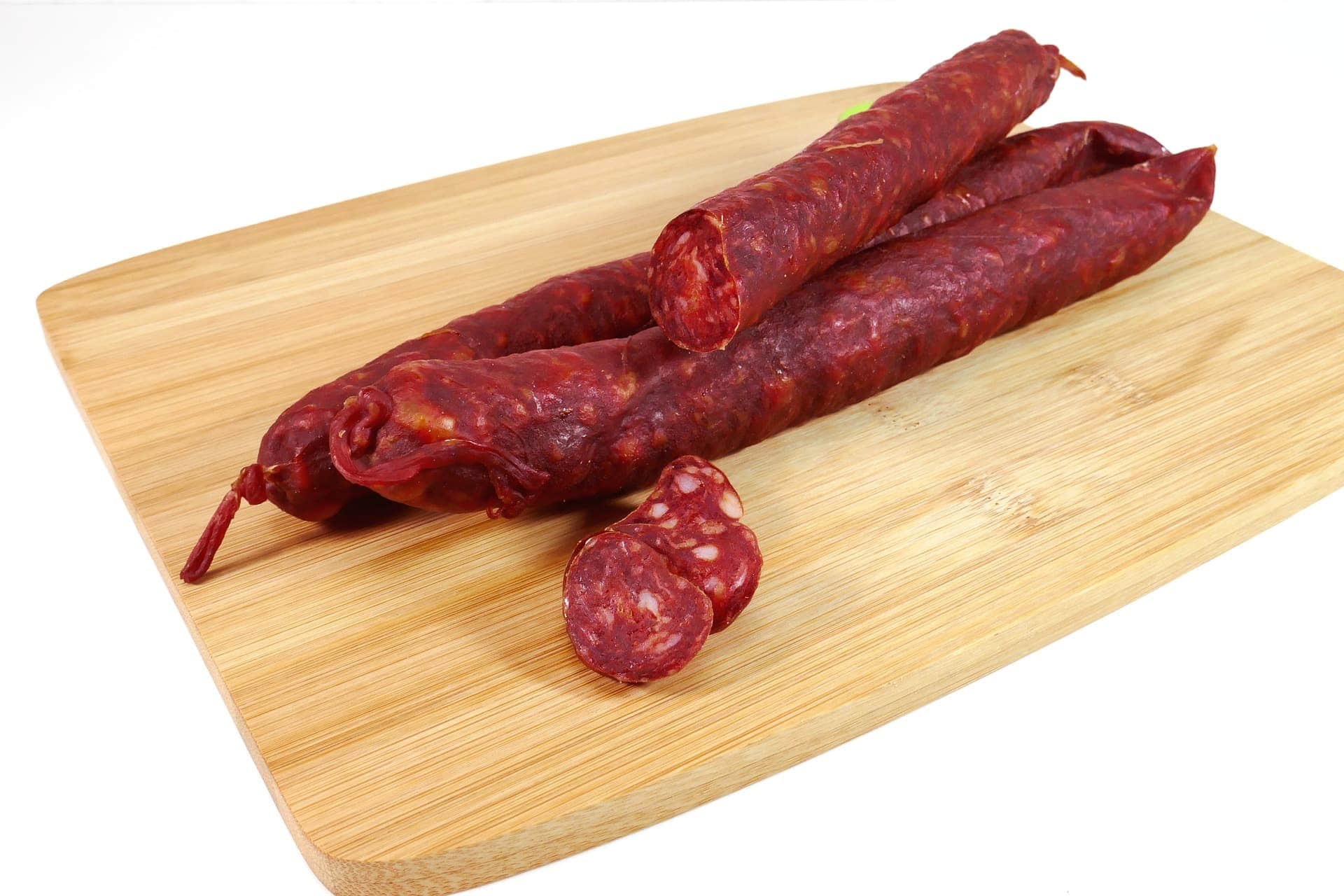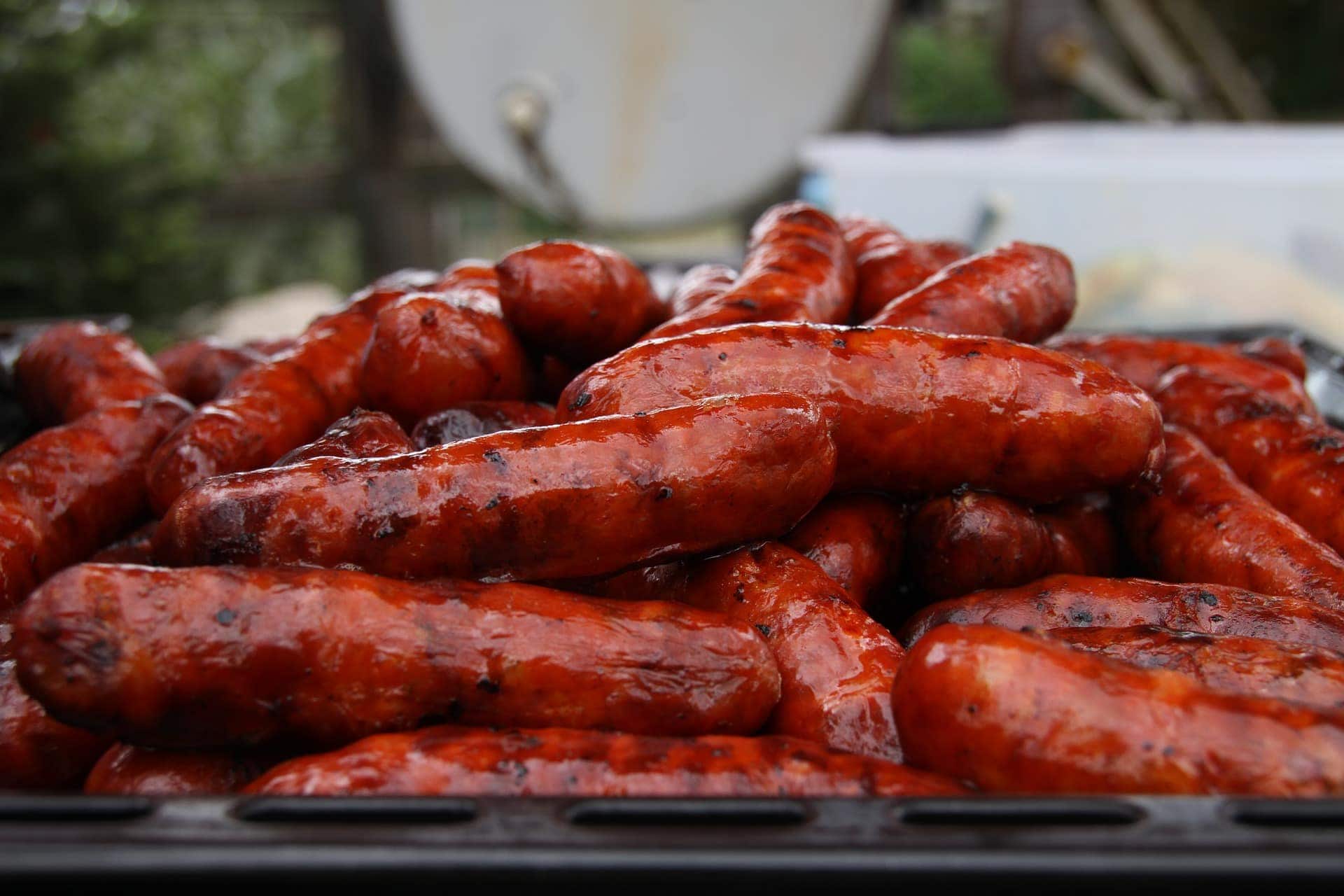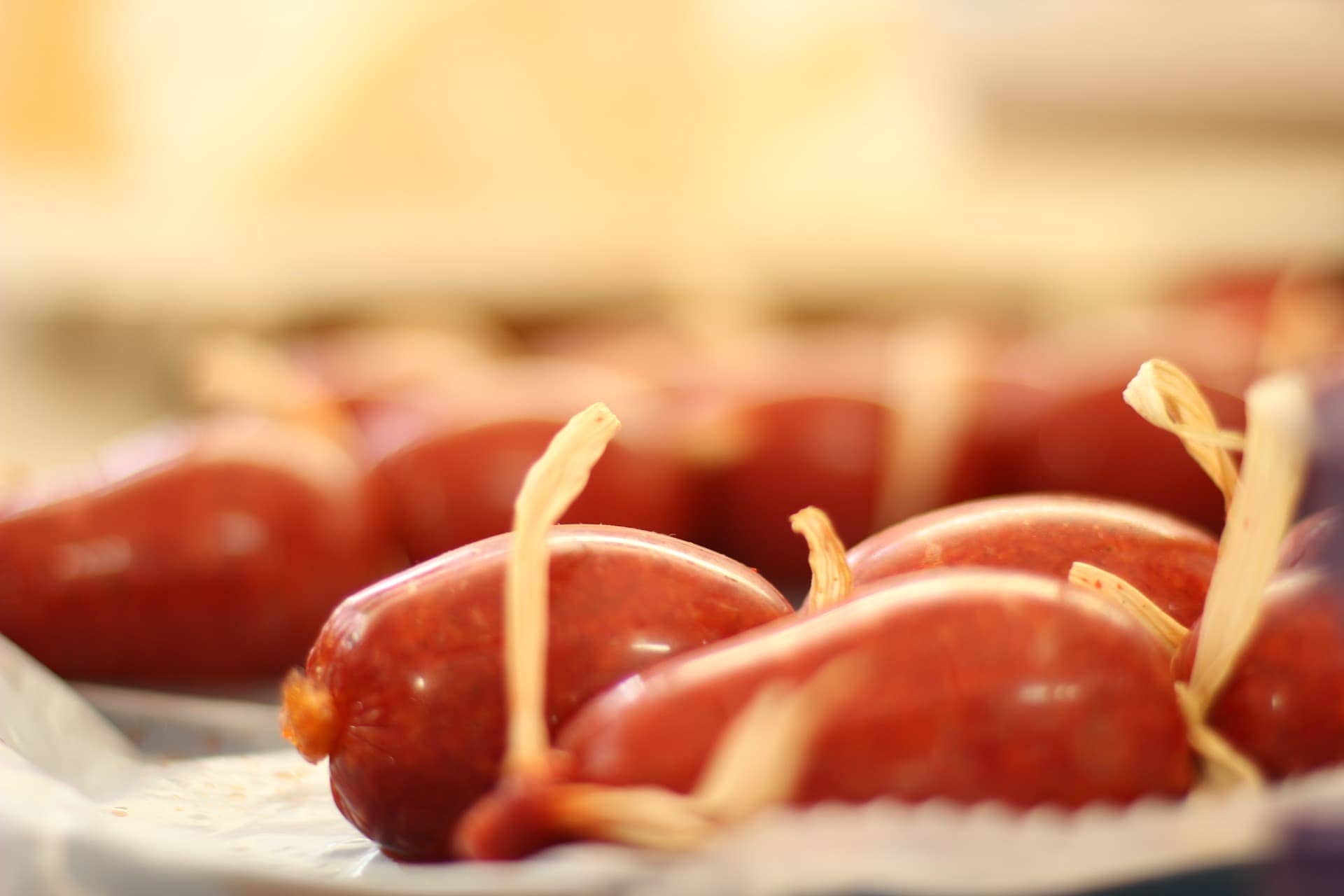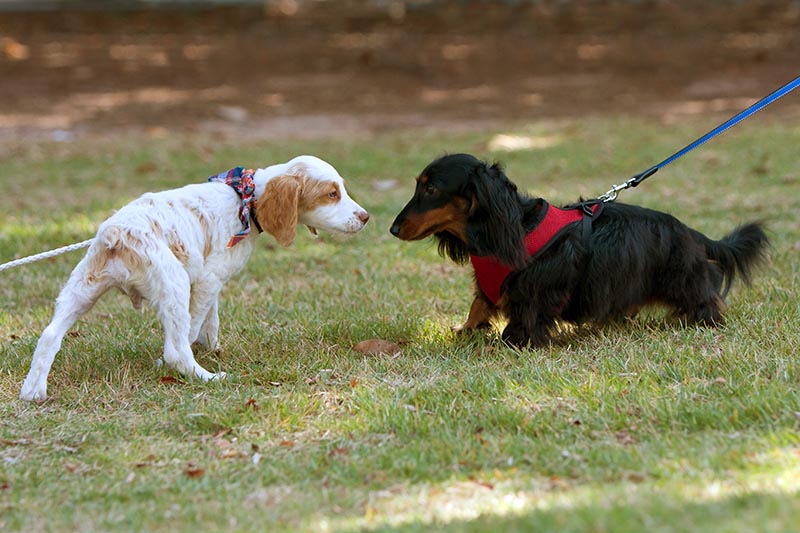Can Dogs Eat Chorizo? Keep Your Dog Healthy!
By Brooke Bundy
Updated on

Spicy and salty, chorizo pairs perfectly with scrambled eggs for breakfast, or rice for lunch. Traditional chorizo is a specific type of Spanish pork sausage, but it may also be derived from beef or soy. While you can feed pork to your canine, as long as it’s cooked to the proper temperature, you shouldn’t feed your dog chorizo because of the high amounts of salt, grease, and spices.
Why Is Chorizo Bad for Dogs?
Seasonings such as paprika, garlic, salt, and onion powder give chorizo the taste we crave. However, none of these ingredients are healthy for your dog, and some are even dangerous.
Spices
Some chorizo contains garlic and onion for flavor. Garlic and onion belong to the Allium plant family and share similar characteristics. Unfortunately, one of their shared traits is their toxicity to dogs. The problem is, we simply don’t know what that threshold is, so it’s best to avoid garlic and onion in your dog’s diet entirely. Symptoms of Allium poisoning include gastrointestinal upset at the start, followed by destruction of red blood cells leading to anemia, high heart rate, panting, and weakness. Since Allium toxicity is potentially very serious, we want to make sure nothing we feed our dog contains these ingredients, and let the vet know if we suspect they did sneak some, or if they start showing signs of poisoning. Garlic and onions are toxic in any form, raw, cooked or powdered.

Sodium
Dogs can also suffer from excessive sodium (salt) ingestion. Not only is it unhealthy in their typical diet, but high amounts of salt can also actually lead to toxicosis. Signs include weakness, diarrhea, muscle tremors, and seizures. Salt poisoning rarely happens if your dog has constant access to fresh drinking water, but it’s still a possibility to consider since it can be deadly.
Other Seasonings/Grease
Chorizo often contains other spices, such as paprika. While these seasonings may not have the potentially lethal impact of garlic, onion, and salt, they can still cause GI upset and aren’t recommended. Additionally, chorizo itself is a fatty meat product, and your dog’s tummy may not tolerate the greasiness and high fat diets are implicated in pancreatitis too.
Undercooked Meat
The final consideration of why chorizo isn’t the best fit for your dog’s bowl includes the possibility of undercooked meat. Since raw meat diets are available for dogs, you may wonder what’s the big deal if the pork isn’t cooked to the proper temperature?
Pork is a little tricky because it can be infected with a parasite called Trichinella, a potentially deadly parasite that is easily transmitted to humans. Trichinella infection is rare in the United States, but the symptoms are so serious that we don’t like to chance it.
In canines, trichinella can cause GI upset, muscle swelling, and weakness. While there are successful treatments, your dog could die without the treatment depending on the severity, or if they aren’t diagnosed soon enough.

Chorizo Alternatives Your Dog Can (Safely) Devour
Certainly there are ways dogs can eat pork safely, but unfortunately chorizo isn’t one of them due to the added spices, sodium, and fat. If you feed your dog pork, you should make sure it’s always fully cooked to 145ºF to 165ºF to avoid the risk of trichinosis. Thoroughly cooked, unseasoned pork makes an excellent alternative to chorizo that your dog can enjoy. Just be sure not to feed them much at once and be sure they have access to fresh water at all times. Alternatively, you can give them a pork-based dog treat if you don’t feel like cooking plain food.
Some dog foods feature pork as the main meat. These recipes may be a good, safe option for your dog, especially if they’re obsessed with the taste of pork. Since dogs are more likely to develop allergies to beef or chicken, pork recipes are often recommended as an alternative, which is something to consider if your dog has allergy symptoms such as itchy skin or recurring ear infections.

What Should I Do If My Dog Ate Chorizo?
If your dog stole some chorizo off your plate, don’t panic. They’ll probably be okay, as long as they didn’t eat an excessive amount. However, you should make sure they have plenty of fresh water and monitor them for signs of illness. Some stomach upset is likely and may not be a serious issue, but always let your vet know if you notice:
- Weakness
- Rapid heart rate
- Pale gums
- Muscle swelling or stiffness
- Blood in urine
- Seizures
- Vomiting or diarrhea that doesn’t go away after two days
All of these things can be a sign of serious illness, so take action as soon as you notice.
Conclusion
Even though you should avoid giving dogs chorizo, pork isn’t inherently bad for your dog. In fact, some dog foods contain pork as the main meat. Dogs are actually more likely to suffer from food allergies to chicken or beef, so your vet might recommend a dog food with pork as the protein if food allergies are suspected. If you do feed your dog cooked pork, make sure it’s cooked to at least 145ºF without any seasonings, and only give them a little bit.
If your dog sneaks some chorizo, monitor them for signs of illness. Always contact your vet if you think they ate an excessive amount, or if they develop symptoms of anemia or muscle stiffness as these can be signs of poisoning or trichinosis. You should also take your dog to the vet if you see blood in their urine or feces or have vomiting or diarrhea that lasts for longer than two days.
- Related Read: Can Dogs Eat Pork Rinds?













